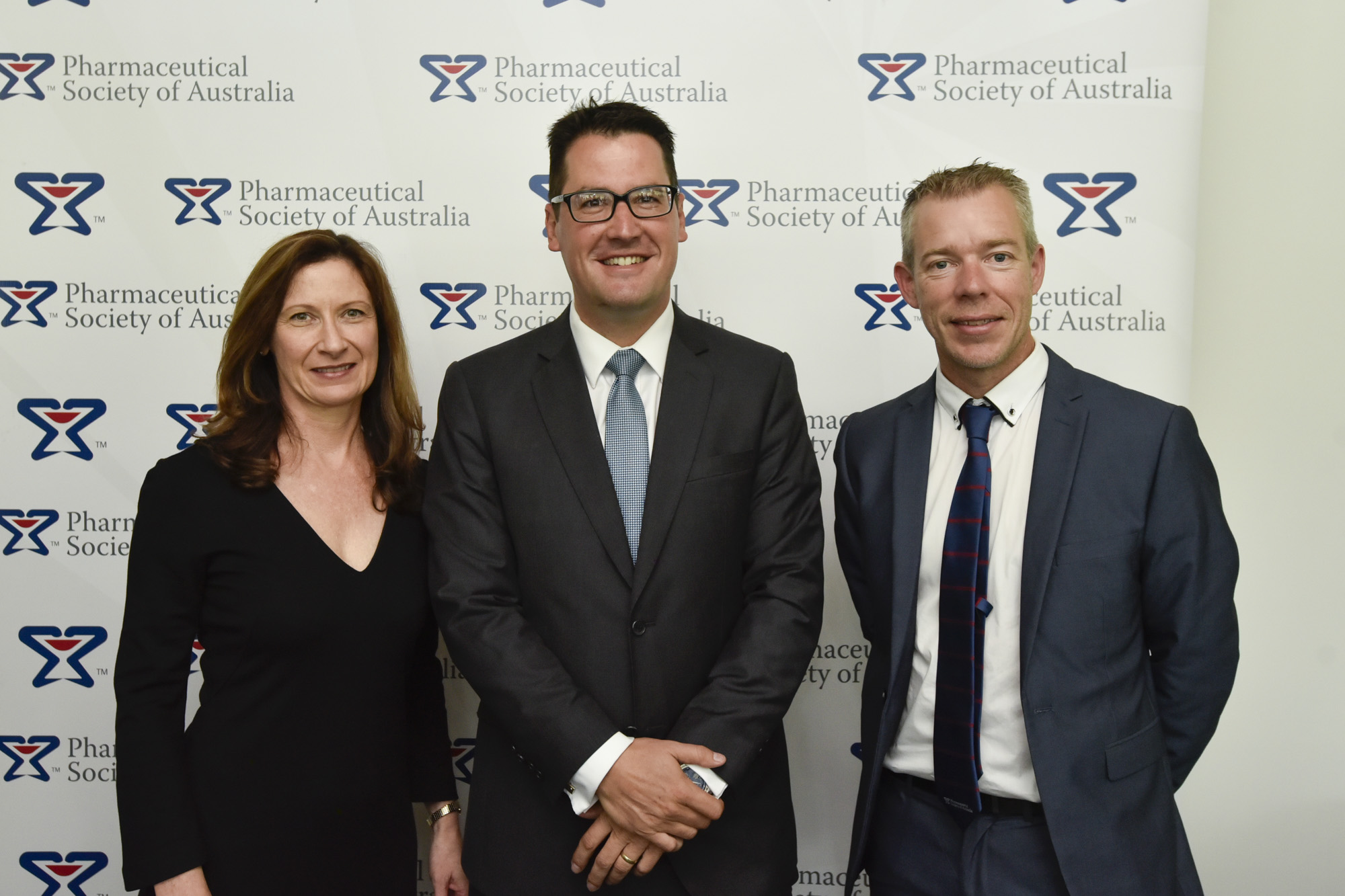A 33-year-old woman was seen by an obstetrician. The patient did not know if she had previously had chickenpox. Her varicella-zoster antibody titre signified non-immunity. She had not been vaccinated.
Three months later, she became pregnant. She was told to avoid crowds of children and to seek vaccination after her delivery. At 13 weeks of gestation, the patient was visited by her mother, who complained of severe pain over one side of her scalp.
When the patient moved her mother’s hair to see what was causing the pain, she felt her mother’s hair to be wet to her touch and saw multiple small blisters. An immediate visit to a GP confirmed a diagnosis of shingles in the patient’s mother. The patient was sent to her obstetrician within 18 hours of her potential exposure to shingles. Varicella-zoster immunoglobulin was not given.
Three weeks later, the patient broke out in a chickenpox rash and was treated with aciclovir. She recovered completely. Sonographic examinations at 19 and 24 weeks of gestation were interpreted as showing bilateral clubfeet, with no other abnormality. At 32 weeks of gestation, ultrasonography showed intrauterine growth retardation. An amniocentesis performed at that time revealed varicella-zoster DNA. No cause for the findings on ultrasound, other than likely congenital varicella syndrome, was found.
Because of worsening intrauterine growth retardation, the baby was delivered by Caesarean section at 36 weeks of gestation. The baby girl was born with bilateral clubfeet, small stomach, severe reflux, an absent gag reflex and profound oral aversion (i.e. refusal to feed).
Over the subsequent three years, she had repeated episodes of aspiration pneumonia and required tube-feeding, a permanent tracheostomy and 24-hour oxygen therapy. She had multiple episodes of viral and bacterial pneumonia, requiring prolonged periods on a ventilator. The child learned to communicate by using sign language.
The patient and family launched a malpractice lawsuit against the obstetrician (for not vaccinating the patient pre-pregnancy and not administering varicella-zoster immunoglobulin following exposure to her mother’s shingles), which was settled in their favour.1
The case, from overseas, highlights the importance of routine immunisation (in this instance, the use of varicella and zoster vaccines) as one of the most effective means of preventing illness, disability, and death from infectious diseases. Varicella-zoster virus is a DNA virus within the herpes family. Primary infection with the virus causes varicella (chickenpox). Following primary infection, the virus enters a latent phase and remains dormant in the thoracic sensory ganglia. Reactivation may occur years later along the sensory dermatome, manifesting as herpes zoster (shingles).2,3
Varicella is a highly contagious infection and is transmitted from person to person by direct contact, via respiratory droplets or secretions, or via aerosolisation of vesicular fluid from skin lesions of chickenpox or shingles infection. Chickenpox is usually a mild self-limiting disease of childhood, characterised by fever, malaise, and a generalised vesicular rash that can involve the trunk, face, and scalp. More than 90% of Australian adults have either been infected with varicella-zoster virus, although many will not remember having it or may have had subclinical infection, or, nowadays, have been vaccinated.4
One dose of varicella-containing vaccine is recommended to be given routinely at 18 months of age.2 The National Immunisation Program Schedule lists MMRV (measles, mumps, rubella and varicella) for routine administration at 18 months.5 Prior chickenpox infection is not a contraindication and such children can still receive MMRV.2,5 It prevents 70% to 90% of infections and 95% of severe disease. Receipt of 2 doses of varicella-containing vaccine provides increased protection and minimises the chance of breakthrough chickenpox in children less than 14 years of age.2 However, routine administration of a second dose of varicella-containing vaccine is not included on the National Immunisation Program Schedule.
Reactivation of latent infection, usually many years after the primary infection, may result in herpes zoster (shingles), a localised, usually painful, blistering skin rash in the distribution of sensory nerve roots, that occurs more frequently among older adults and in people who are immunocompromised.2,4,5 In 80% of shingles cases there is a prodromal phase of 48-72 hours before the appearance of the rash, with symptoms of itching, tingling or severe pain in the affected dermatome and sometimes headache, photophobia and malaise.4,6
About 25% of people develop shingles during their lifetime, and more than two-thirds of cases occur in people over the age of 50 years. The increased susceptibility in older adults is due to a decline in specific cell-mediated immune responses to latent varicella-zoster virus with advancing age. The most common and debilitating complication of shingles is persistent chronic neuropathic pain, known as post-herpetic neuralgia, generally defined as pain that persists beyond 90-120 days from the onset of rash.4,6-8 It may occasionally last for years.6 Both the incidence and the duration of post-herpetic neuralgia are directly related to increasing age.
A sinister newly-recognised complication of shingles is the increased risk of cardiovascular and cerebrovascular events.8-11 In particular, shingles is now an established risk factor for stroke, especially shortly after infection. A 2.4-fold increased ischaemic stroke rate (95% CI 2.17-2.59) and a 1.7-fold increased acute myocardial infarction rate (95% CI 1.47-1.92) have been observed in the first week after diagnosis of shingles, followed by a gradual resolution of elevated risk over 6-12 months.11 Preventive vaccination should be especially encouraged in patients at high risk of cardiovascular disease.
The aim of treatment for shingles is to accelerate the healing of the rash, reduce the duration and severity of pain, and decrease the risk of complications, especially post-herpetic neuralgia.6-8
Aggressive treatment early in the acute phase of shingles using antivirals and analgesics has been shown to reduce the likelihood of post-herpetic neuralgia. A single dose of live attenuated zoster vaccine (Zostavax) substantially reduces the risk for shingles (by about 50%) and post-herpetic neuralgia (by about two-thirds) in adults 60 years of age and older.2,4,6 Also, cases of shingles and post-herpetic neuralgia after vaccination appear to be much milder than in those people who develop shingles in the absence of vaccination.
The vaccine is more efficacious in preventing shingles among persons who are 60 to 69 years of age than among those who are 70 years or older. Although the vaccine efficacy against shingles is lower in the 70-79 years group compared with younger ages, persons over 70 years of age experience a greater risk of disease.2,4,6
In Australia, a single dose of herpes zoster vaccine is recommended for adults 60 years of age and older who have not previously received a dose of the vaccine. In persons aged 80 years or older, vaccination is less efficacious but may still provide some clinical benefits. Since November 2016, a single dose of zoster vaccine is funded on the National Immunisation Program Schedule for all adults at 70 years of age.5
A new non-live, recombinant vaccine (Shingrix) indicated for prevention of shingles in adults aged 50 years and older, should be available in Australia soon. It possesses a number of advantages over Zostavax. Its efficacy is 90% or higher, compared with only about 50% with Zostavax, and its duration of protection should be longer. Being a non-live vaccine, it will also overcome the contraindication to Zostavax in individuals who are immunosuppressed or immunodeficient.
Varicella-zoster virus is usually present in the skin lesions of shingles rash until the lesions dry and crust over. Direct contact with skin vesicles can transmit the virus to cause chickenpox in susceptible people, including those who have not previously had chickenpox or who have never received the varicella vaccine.4
The risk of infection following contact with shingles that is not in an exposed area is remote but can occur.12 Overall, the rate of infection in susceptible people after exposure to a person with shingles (about 15% of susceptible household contacts will be infected) is much less than after exposure to a person with chickenpox (60-100% of susceptible contacts will be infected).4
Preventing such transmission via direct contact and aerosolisation can be done by covering non-crusted shingles lesions with a light non-adherent padding dressing after bathing regularly with saline to remove exudate and crusts. Patients should be instructed to avoid susceptible contacts, especially those who are pregnant or immunocompromised.6
Primary infection with varicella-zoster virus during pregnancy can lead to devastating outcomes for both the mother and foetus. Prevention is critical.1 Fortunately, because of the high frequency of immunity within the child-bearing population, contact with chickenpox among pregnant women rarely results in maternal infection (estimated to complicate up to 2 to 3 of every 1000 pregnancies).13,14
Also, in most women, if chickenpox does develop in pregnancy, there is no lasting harm to them or their baby. However, infection can uncommonly cause severe illness in the mother, the foetus or the neonate. Prevention can reduce these concerns from infection. Checking the immune status in women of childbearing age and immunising when appropriate, at least one month prior to conception, is a first step.2,15,16 The varicella vaccine is a live attenuated virus and is contraindicated in pregnancy given a paucity of safety data, although there is no evidence of vaccineinduced congenital varicella syndrome.2
Varicella-zoster immunoglobulin should be given as soon as possible to exposed non-immune mothers at any stage of pregnancy, and to neonates at risk of exposure to varicella-zoster virus (if birth occurs within 10 days of exposure) because of inadequate transfer of maternal antibodies.12,14-16 High-titre varicella-zoster immunoglobulin is highly efficacious in preventing or lessening the severity of varicella and it may reduce the risk of development of congenital varicella syndrome,2,12,13 but it is often in short supply. It is available from the Australian Red Cross Blood Service on a restricted basis for use in high-risk patients without immunity who have had a significant exposure to chickenpox or shingles.2
‘Significant exposure’ to varicella-zoster virus is defined as living in the same household as a person with active chickenpox or shingles, or direct face-to-face contact with a person with chickenpox or uncovered shingles for at least 5 minutes, or being in the same room for at least 1 hour. Varicella-zoster immunoglobulin must be given early in the incubation period (within 96 hours of exposure), but may have some efficacy if administered out to as late as 10 days post-exposure.2,3,17
If practicable, pregnant women should be tested for varicella-zoster antibodies before the immunoglobulin is given, following significant contact with a person with confirmed chickenpox or shingles.2,12,13 However, this should not delay its administration. Varicella-zoster immunoglobulin is ineffective, and should not be given, once clinical chickenpox or shingles infection is established.
If more than 96 hours has passed following exposure, oral aciclovir or valaciclovir should be considered for some non-immune pregnant women:17 in the second half of pregnancy (when the risk of maternal death is higher); with a history of an underlying lung disease or those who are smokers (increased risk of developing varicella pneumonia); or those who are immunocompromised. Pregnant women should seek medical care immediately if chickenpox develops; 7 days of oral antiviral therapy (famciclovir, valaciclovir or aciclovir) is recommended, if it can be started within 72 hours of the onset of rash.13
Chickenpox infection in pregnant women can lead to severe maternal illness (e.g. pneumonia, hepatitis and encephalitis) and is five times more likely to be fatal than in non-pregnant women and at least 20 times more likely to be fatal than in children.1,15,16 Death from chickenpox in pregnant women usually results from respiratory disease. It is estimated that 5% to 20% of pregnant women with chickenpox develop pneumonia, and the risk is higher if varicella-zoster is contracted during the third trimester of pregnancy.3,14 Pregnant women with varicella pneumonia should be given intravenous aciclovir therapy, which reduces mortality related to varicella pneumonia nearly 4-fold.
Although most women who have chickenpox in pregnancy give birth to healthy children, in other cases the baby is harmed by in-utero infection or severe chickenpox of the newborn.15,16 The risks for the foetus and neonate of varicella infection in the mother depend on the timing. If the onset of chickenpox in the mother is from 5 days before delivery to 2 days after delivery, an estimated 17% to 30% of the newborns contract severe chickenpox infection because of the lack of maternal antibodies to protect the neonate and the relative immaturity of the neonatal immune system.2,3 Before varicella-zoster immunoglobulin was available, the risk of death among neonates born to mothers with the onset of rash up to 4 days before delivery was 31%; this fell to 7% or less after use of the immunoglobulin became routine in this situation.3
When chickenpox occurs earlier during pregnancy, transmission can occur, but is usually asymptomatic; interestingly, some infants and children subsequently develop shingles, without a history of symptomatic chickenpox, after intra-uterine exposure to the varicella-zoster virus.18,19 Shingles in the mother has no known adverse effect on the foetus. This is because the foetus passively acquires, and is protected by, the mother’s anti-varicella antibodies produced in response to her initial chickenpox infection.15 In contrast, chickenpox has teratogenic potential and is associated with low birth weight.1-3,12,14-18 When a non-immune pregnant woman contracts chickenpox during the first 2 trimesters, a rare but serious multi-system foetal anomaly called the congenital varicella syndrome can occur (incidence of about 1%; 1.4% with maternal infection in the second trimester versus 0.55% in the first trimester), with potentially numerous malformations, most notably areas of skin loss or scarring, hypoplasia of the limbs, neurological defects, growth retardation and eye diseases. Lesions typically follow one or several nerve territories, suggesting that the damage does not occur at the time of initial foetal infection with the virus, but results from a subsequent shingles reactivation in-utero (i.e. congenital varicella syndrome can be considered similar to shingles in‑utero).1,12,15,16
Mortality is high; of the neonates born with congenital varicella syndrome, nearly 30% die within the first few months of life.18 Primary prevention of congenital varicella syndrome consists of effective vaccination of the mother before conception, while secondary prevention involves the use of varicella-zoster immunoglobulin in susceptible pregnant women after exposure.
Pharmacists should be actively involved in promoting recommended immunisation schedules among the whole population, from infants to the elderly.
PROFESSOR GREGORY PETERSON MPS is Deputy Dean (Research), Faculty of Health and Co- Director, Health Services Innovation Tasmania, School of Medicine, University of Tasmania and a community pharmacist.
References
- Cohen A, Moschopoulos P, Stiehm RE, et al. Congenital varicella syndrome: the evidence for secondary prevention with varicella-zoster immune globulin. CMAJ 2011;183(2):204-8.
- The Australian Immunisation Handbook, 10th edition, 2015: Commonwealth of Australia (http://www.immunise.health.gov.au/internet/immunise/publishing.nsf/Content/Handbook10-home)
- Gardella C, Brown ZA. Managing varicella zoster infection in pregnancy. Cleve Clin J Med 2007;74(4):290-6.
- National Centre for Immunisation Research & Surveillance (NCIRS). Zoster vaccine for Australian adults: information for immunisation providers. NCIRS Fact sheet: July 2015. http://ncirs.edu.au/assets/provider_ resources/fact-sheets/zoster-vaccine-fact-sheet.pdf
- Department of Health, Australian Government. National Immunisation Program Schedule (From November 2016). Commonwealth of Australia. http://www.immunise.health.gov.au/internet/immunise/publishing.nsf/Content/national-immunisation-program-schedule
- Wehrhahn MC, Dwyer DE. Herpes zoster: epidemiology, clinical features, treatment and prevention. Aust Prescr 2012;35:143-7.
- Herpes zoster: antiviral therapy [Published November 2014]. In: eTG March 2016 edition. Melbourne: Therapeutic Guidelines Limited.
- Wollina U, Machetanz J. Herpes zoster and postherpetic neuralgia. Hautarzt 2016;67(8):653-665.
- Erskine N, Tran H, Levin L, et al. A systematic review and meta-analysis on herpes zoster and the risk of cardiac and cerebrovascular events. PLoS One 2017;12(7):e0181565.
- Marra F, Ruckenstein J, Richardson K. A meta-analysis of stroke risk following herpes zoster infection. BMC Infect Dis 2017;17(1):198.
- Minassian C, Thomas SL, Smeeth L, et al. Acute cardiovascular events after herpes zoster: a self-controlled case series analysis in vaccinated and unvaccinated older residents of the United States. PLoS Med 2015;12(12):e1001919.
- Royal College of Obstetricians and Gynaecologists. Chickenpox in pregnancy. Green-top Guideline No. 13. January 2015.
- Varicella (chicken pox) [Published November 2014]. In: eTG March 2016 edition. Melbourne: Therapeutic Guidelines Limited.
- Shrim A, Koren G, Yudin MH, et al. Management of varicella infection (chickenpox) in pregnanc J Obstet Gynaecol Can 2012;34(3):287-92.
- Chickenpox, pregnancy and the newborn: a follow-up. Drug Ther Bull 2005;43(12):94-5.
- Chickenpox, pregnancy and the newborn. Drug Ther Bull 2005;43(9):69-72.
- Department of Health, Government of South Australia. South Australian Perinatal Practice Guideline. Varicella-zoster (chickenpox) in pregnancy clinical guideline. South Australian Maternal & Neonatal Clinical Network, 2015, ISBN: 978-1-74243-751-4.
- Ahn KH, Park YJ, Hong SC, et al. Congenital varicella syndrome: A systematic review. J Obstet Gynaecol 2016;36(5):563-6.














 PSA Chief Operating Officer Deb Bowden, Senator Zed Seselja and PSA National President Dr Shane Jackson.[/caption]
PSA Chief Operating Officer Deb Bowden, Senator Zed Seselja and PSA National President Dr Shane Jackson.[/caption]





 [post_title] => New Pharmacy House opens
[post_excerpt] =>
[post_status] => publish
[comment_status] => open
[ping_status] => open
[post_password] =>
[post_name] => new-pharmacy-house-opens
[to_ping] =>
[pinged] =>
[post_modified] => 2018-04-05 12:33:52
[post_modified_gmt] => 2018-04-05 02:33:52
[post_content_filtered] =>
[post_parent] => 0
[guid] => http://psa.studionerve.com/?p=1231
[menu_order] => 0
[post_type] => post
[post_mime_type] =>
[comment_count] => 0
[filter] => raw
)
[title_attribute] => New Pharmacy House opens
[title] => New Pharmacy House opens
[href] => http://psa.studionerve.com/new-pharmacy-house-opens/
[module_atts:td_module:private] => Array
(
)
[td_review:protected] => Array
(
)
[is_review:protected] =>
[post_thumb_id:protected] => 1239
)
[post_title] => New Pharmacy House opens
[post_excerpt] =>
[post_status] => publish
[comment_status] => open
[ping_status] => open
[post_password] =>
[post_name] => new-pharmacy-house-opens
[to_ping] =>
[pinged] =>
[post_modified] => 2018-04-05 12:33:52
[post_modified_gmt] => 2018-04-05 02:33:52
[post_content_filtered] =>
[post_parent] => 0
[guid] => http://psa.studionerve.com/?p=1231
[menu_order] => 0
[post_type] => post
[post_mime_type] =>
[comment_count] => 0
[filter] => raw
)
[title_attribute] => New Pharmacy House opens
[title] => New Pharmacy House opens
[href] => http://psa.studionerve.com/new-pharmacy-house-opens/
[module_atts:td_module:private] => Array
(
)
[td_review:protected] => Array
(
)
[is_review:protected] =>
[post_thumb_id:protected] => 1239
)












